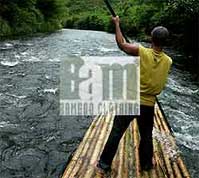Green hour

"Go outside and play" was a common refrain heard around the neighborhood in years past, but not anymore. This marked departure from behavior patterns of earlier generations means that for the first time in our country's history, an entire generation is growing up disconnected from nature.
A study by the Kaiser Family Foundation found that the average American child spends 44 hours per week (6 hours a day!) staring at some sort of electronic screen-TV, video games, computer, etc. Respected author Richard Louv refers to this "nature deficit disorder" as a most disturbing but preventable trend.
Too much television has been scientifically linked to obesity,violence and even lower intelligence in kids. Now the signs are that these indoor kids are less healthy than their outdoor counterparts.
Children benefit greatly from spending unstructured time outside. In addition to creative play, they learn practical skills and how to experiment in the physical world. Their stress levels go down and their imaginations soar. They become fitter and leaner and their immune systems grow stronger. Time spent surrounded by nature helps young people begin to see where they fit in the world, the value of wildlife and wild places and the true importance of conservation.
To counter this nature deficit disorder trend, the National Wildlife Federation recommends that parents give their kids a "Green Hour" every day; time for unstructured play and interaction with the natural world. This can occur in a garden, the backyard, the park down the street, or any place that provides safe and accessible green spaces in which to discover, learn and play. Here are some ideas to get you started:
- Take you child on a nature walk, or better yet let your child take you.
- Put up a birdfeeder.
- Go camping in the backyard.
- Create a backyard wildlife habitat.
- Go fish and release
- Go on a bug safari.
- Get to know your local nature center
- Send your child on a nature scavenger hunt.
- More ideas can be found at The National Wildlife Federation site.



2:13 PM









<< Home